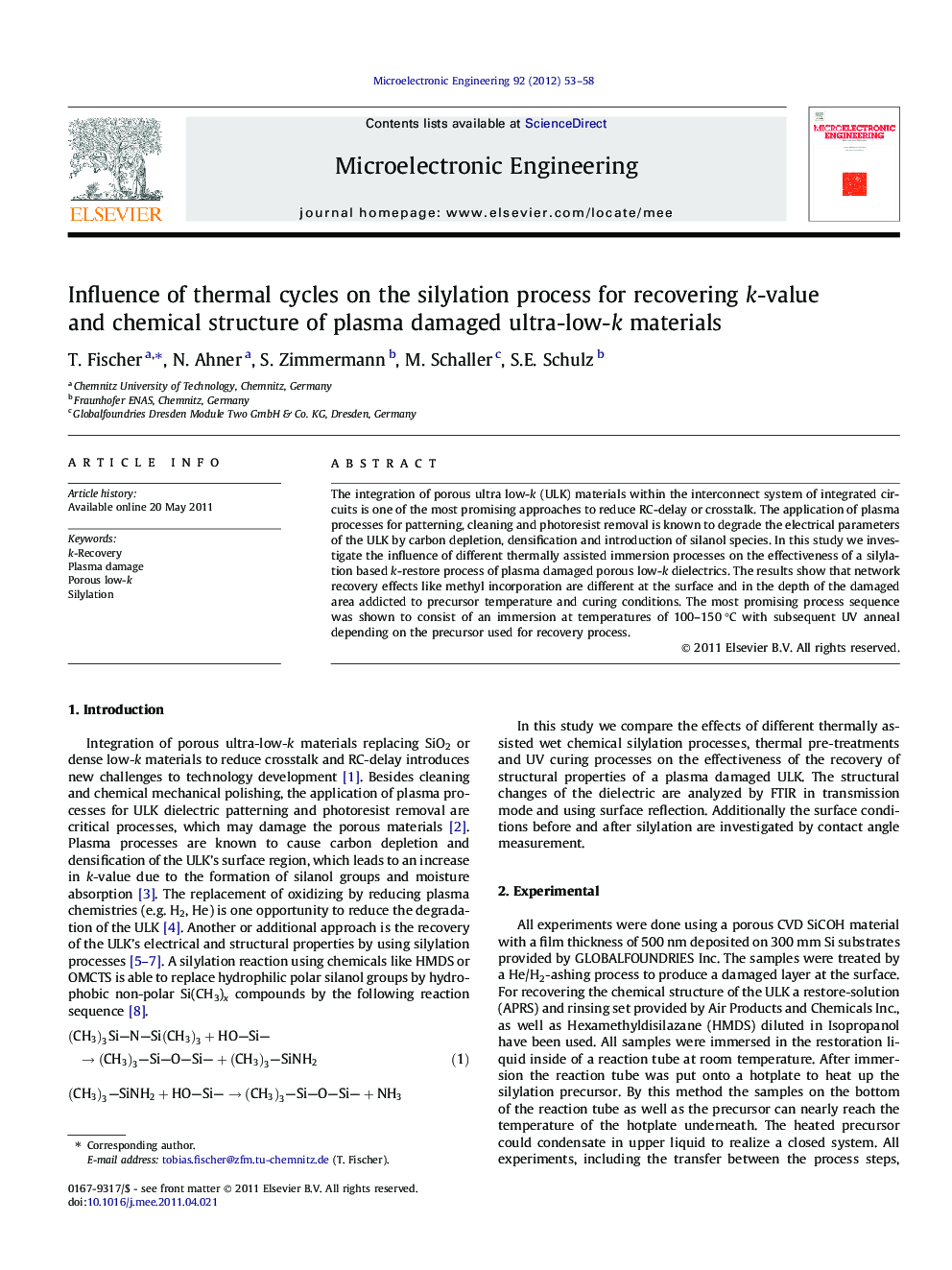| Article ID | Journal | Published Year | Pages | File Type |
|---|---|---|---|---|
| 539494 | Microelectronic Engineering | 2012 | 6 Pages |
The integration of porous ultra low-k (ULK) materials within the interconnect system of integrated circuits is one of the most promising approaches to reduce RC-delay or crosstalk. The application of plasma processes for patterning, cleaning and photoresist removal is known to degrade the electrical parameters of the ULK by carbon depletion, densification and introduction of silanol species. In this study we investigate the influence of different thermally assisted immersion processes on the effectiveness of a silylation based k-restore process of plasma damaged porous low-k dielectrics. The results show that network recovery effects like methyl incorporation are different at the surface and in the depth of the damaged area addicted to precursor temperature and curing conditions. The most promising process sequence was shown to consist of an immersion at temperatures of 100–150 °C with subsequent UV anneal depending on the precursor used for recovery process.
Graphical abstractFigure optionsDownload full-size imageDownload as PowerPoint slideHighlights► In this study we compare silylation effects on plasma damaged ultra-low-k materials. ► We study how different immersion temperatures change repair effects. ► The influence of different pre- and post treatments has been compared. ► Plasma damaged ULK could partial be restored.
